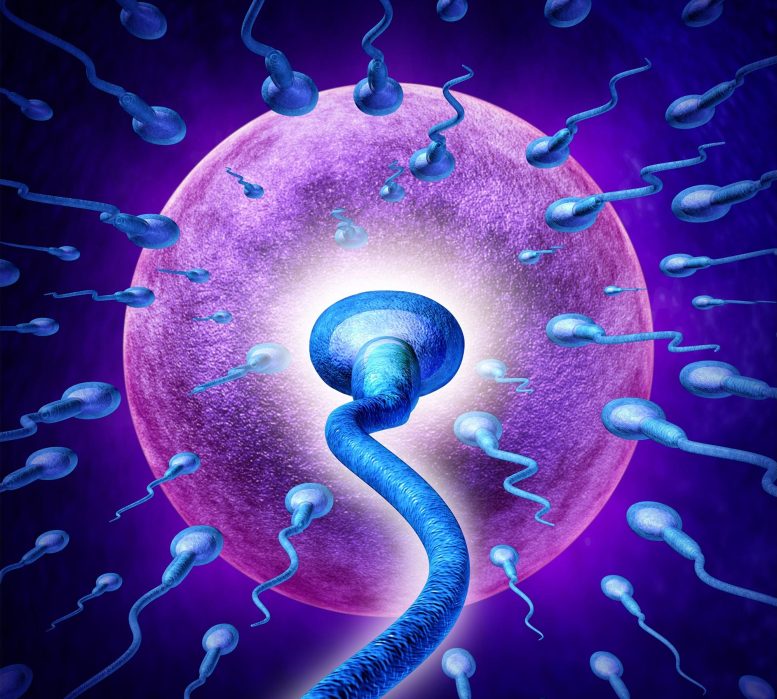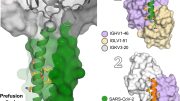
One in six couples faces infertility issues, with male infertility increasingly recognized but often inadequately diagnosed and treated. A recent report emphasizes the role of environmental factors and lifestyle choices in male infertility and advocates for updated diagnostic techniques, with the research team developing a genomic diagnostic tool, HisTurn, aimed at personalized treatment.
A consortium of international experts gives 10 recommendations to increase the chances that men will experience the joys of fatherhood and have healthy children
Infertility now affects one in six couples of reproductive age according to the World Health Organisation. About half the time, it originates from men. As male infertility is increasing worldwide, researcher Sarah Kimmins and 25 international experts highlight that men have a right to meaningful diagnoses and targeted treatments.
Unfortunately, these are currently unavailable in most cases.
The lack of knowledge regarding the causes of male infertility in combination with limited clinical tools, has resulted in female-focused treatment—burdensome and risky invasive procedures—for male infertility.
In a consensus report published in the journal Nature Reviews Urology, the consortium of 25 scientists led by Moira O’Bryan, Dean of Science at the University of Melbourne, reveals 10 recommendations that could improve the health of men and their children, and decrease the burden on their female partners.
Université de Montréal Professor Sarah Kimmins, a researcher at the CHUM Research Centre (CRCHUM), weighs in the report as the first author and a world-leading expert in male fertility and gene-environment interactions.
Lifestyle and Environment Play a Key Role
“The rapid decline in male fertility cannot be explained by genetics, and studies indicate that environmental factors are a driving force, said Sarah Kimmins. These include increased exposure to hormone-disrupting chemicals that exist in our daily lives and persist in the environment.”
“Other factors include the rise in overweight and obese men, poor diet, stress, cannabis use, alcohol and smoking or vaping. Unfortunately, men are generally unaware of these factors.”

Sarah Kimmins, a CRCHUM researcher and professor at Université de Montréal. Credit: Amélie Philibert I Université de Montréal
One of the key recommendations of the report is to increase public awareness through public health campaigns around these lifestyle choices that are hazards to men’s fertility.
“As it takes months to make sperm, men should consider adopting a healthy lifestyle well before planning their families,” said Dr. Jacquetta Trasler, the study’s co-author and senior scientist at the Research Institute of the McGill University Health Centre.
Urgent Need for Better Diagnoses and Treatment
“The clinic is poorly equipped to properly diagnose and treat male reproduction. Current methods are based on outdated techniques,” said Géraldine Delbès, the study’s co-author and researcher at Institut national de la recherche scientifique.
Men are currently designated infertile based on family history, physical examination, hormone profiles, and a simple semen analysis that has not changed for more than 50 years.
“As health professionals, going forward, we need more funding of research that will allow us to offer men sensitive and accurate tests of sperm health,” said Dr. Trasler.
A Personalized Medicine Approach
Towards that goal, Sarah Kimmins and her team have devoted years of research to develop a better male fertility diagnostic.
Aptly named HisTurn, it will be the first genomic diagnostic that offers a personalized medicine approach for male infertility.
While HisTurn is currently being clinically validated the goal is that its eventual use in fertility clinics will give men an accurate diagnosis that can better guide treatment, saving couples and clinics time and money, while improving the efficiency and success rates of fertility treatment.
“Decreasing semen quality and increasing frequency of testicular cancer and congenital defects in the urogenital system indicate that, globally, male reproductive health has declined over recent decades. Research is needed to understand why, and how this trend can be reversed. Urgent, worldwide action to implement our recommendations is critical,” states Moira O’Bryan.
About the 10 recommendations
- Governments, healthcare systems, insurance companies, and the public should understand and acknowledge that male infertility is a common, serious medical condition and patients have a right to meaningful diagnoses and targeted treatments;
- Establish a global network of registries and biobanks containing standardized clinical and lifestyle information, and tissue from fertile and infertile men, their partners, and children. Link it to national healthcare data systems;
- Implement protocols and incentives to standardize the collection of de-identified tissue and clinical/lifestyle data;
- Fund more international, collaborative research to understand the interactions and impacts of genetic, lifestyle, and environmental factors on male fertility in diverse populations;
- Integrate genomic sequencing into the diagnosis of male infertility;
- Develop additional diagnostic tests to improve diagnosis and cause of male infertility.
- Rigorously test the impact on male fertility of compounds—especially endocrine-disrupting chemicals—in products, the workplace, and the environment. Implement regulations and policies and develop safe alternatives;
- Rigorously test strategies for medically assisted reproduction before they are integrated into clinical practice;
- Public education campaigns to promote discussion of male infertility and engagement in health-seeking;
- Improved training for healthcare workers to promote male reproductive health across the lifespan.
Reference: “Frequency, morbidity and equity — the case for increased research on male fertility” by Sarah Kimmins, Richard A. Anderson, Christopher L. R. Barratt, Hermann M. Behre, Sarah R. Catford, Christopher J. De Jonge, Geraldine Delbes, Michael L. Eisenberg, Nicolas Garrido, Brendan J. Houston, Niels Jørgensen, Csilla Krausz, Ariane Lismer, Robert I. McLachlan, Suks Minhas, Tim Moss, Allan Pacey, Lærke Priskorn, Stefan Schlatt, Jacquetta Trasler, Leonardo Trasande, Frank Tüttelmann, Mónica Hebe Vazquez-Levin, Joris A. Veltman, Feng Zhang and Moira K. O’Bryan, 12 October 2023, Nature Reviews Urology.
DOI: 10.1038/s41585-023-00820-4
The study was funded by the Canadian Institutes of Health Research, the National Health and Medical Research Council of Australia, and the European Society of Human Reproduction and Embryology.









WHA…..?????!!!!! And how is this a problem? This is the solution we have all been waiting for. I don’t see any shortage of children!
Agreed! The one thing that would help the human species survive is fewer humans.
The only key to less people is to decide whether to have children or not. In respect to infertility the answer might lie in the amount of proteins/molecules at the subatomic level to give the living sperm enough life span and strength to be viable, observation at the subatomic level may lead to answers.